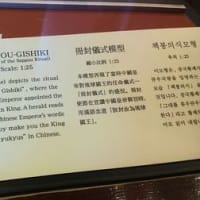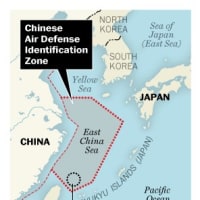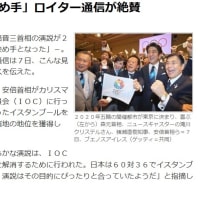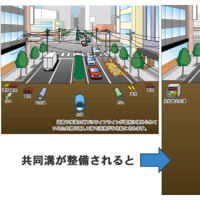あらゆる局面で、中共一党独裁政権国家のひずみが生じています。
国際社会はいったいいつまでこの国の大中華帝国主義に基づく傍若無人な行いを放置するのでしょうか。
もう限界が近付いていると考える方が妥当ではないでしょうか。以下事例もそのひとつにしか過ぎません。
「いまもっとも国連の精神に反する国家」
それは間違いなく中国であるという共通認識を持つべきです。
国連に「中国問題検討委員会」の設置を強く望みます。
【関連資料】
ビジネスアイの時事英語(1月30日)
ビジネスアイ・メルマガ事務局 eigo@sankei.co.jp
【英文】
In the Caribbean village of Tuchin, Colombian families who’ve woven straw hats for generations are seeing their livelihoods threatened by competition that shows China’s double-edged impact
in Latin America.
Chinese-made imitations of the black-and-white sombrero vueltiao, as the hat is known, sell for half the $20 price of the least expensive originals. In response to plunging sales by artisans who spend up to 15 days cutting, sun-drying and braiding cane leaves to make a single
hat, the government is rushing to protect one of the nation’s symbols and ban plastic, machine-made rip-offs.
“The Chinese are stealing our culture like the Spaniards did 500 years ago,” said Eligio Pestana, mayor of Tuchin, where 90 percent of the 34,000 residents, descendants of Zenu Indians, depend on
the handicraft trade.
An anti-China backlash is on the rise throughout South America as businesses, from automakers in Brazil to shoemakers in Argentina, demand protection from foreign competition. The trade
tension highlights the downside of the continent’s increasing economic ties with the world’s most populous nation, fueled by China’s appetite for commodities from copper to soybeans.
“There’s high sensitivity to China throughout the region,” Colombian Finance Minister Mauricio Cardenas said in a Jan. 15 interview in Bogota. “While we’re all happy with one side of the story, enjoying the high price for our
commodity exports, the economic impact on the currency andmanufacturers can be very negative.”
China’s share of the region’s imports has surged to 13.3 percent in 2010, from 1.8 percent in 2000, the United Nations Economic Commission for Latin America and the Caribbean said in a report last
year. The world’s No. 2 economy is forecast to surpass the European Union as the region’s second-biggest source of imports in 2015, the same report said.
【邦訳】
南米コロンビアの村トゥチンで、代々、伝統の麦わら帽子を編んで生計を立ててきた住民が、中国との競争に生活を脅かされている。
黒と白の模様をあしらったこの帽子「ソンブレロ・ブエルティアオ」の中国製模造品は、本物のうち最も安い製品(20ドル=約1800円)の半値で売られている。職人がこの帽子1つを作るには、材料となる植物を切って日に干して編むなどの工程で15日はかかる。政府はコロンビアを象徴する名物の1つであるソンブレロの急激な販売落ち込みを受け、自国製品を保護するとともに、プラスチック素材の機械製レプリカについては販売を禁止する取り組みを急いでいる。
トゥチンのエリヒオ・ペスタナ村長は、「中国人がわれわれの文化を盗んでいる。500年前にスペイン人がしたのと同様だ」と話す。かつてこの地に古代文明を興したシヌー族の末裔が暮らすこの村の人口は3万4000人。その90%はソンブレロの製造・販売で暮らしている。
反中感情が南米中で高まっている。ブラジルの自動車業界やアルゼンチンの靴製造業者など、産業界は外国との競争からの保護を求めている。銅から大豆まで中国の商品需要を背景に同国と南米の経済的な結び付きは強まっているが、こうした貿易摩擦はその負の側面を浮き彫りにしている。
コロンビアのカルデナス財務相は15日のボゴタでのインタビューで、「域内全域が中国に対して過敏になっている」と指摘。「われわれの商品の輸出価格が上昇するのは良いことだが、為替と製
造業者への経済的影響は非常にネガティブなものになりかねない」と述べた。
国連ラテンアメリカ・カリブ経済委員会が昨年まとめた報告書によると、同地域の輸入における中国の割合は2010年に13.3%となり、2000年の1.8%から大幅に上昇した。中国からの輸入が15年
には欧州連合(EU)を抜いて2位に浮上すると、同委員会は予想している。
国際社会はいったいいつまでこの国の大中華帝国主義に基づく傍若無人な行いを放置するのでしょうか。
もう限界が近付いていると考える方が妥当ではないでしょうか。以下事例もそのひとつにしか過ぎません。
「いまもっとも国連の精神に反する国家」
それは間違いなく中国であるという共通認識を持つべきです。
国連に「中国問題検討委員会」の設置を強く望みます。
【関連資料】
ビジネスアイの時事英語(1月30日)
ビジネスアイ・メルマガ事務局 eigo@sankei.co.jp
【英文】
In the Caribbean village of Tuchin, Colombian families who’ve woven straw hats for generations are seeing their livelihoods threatened by competition that shows China’s double-edged impact
in Latin America.
Chinese-made imitations of the black-and-white sombrero vueltiao, as the hat is known, sell for half the $20 price of the least expensive originals. In response to plunging sales by artisans who spend up to 15 days cutting, sun-drying and braiding cane leaves to make a single
hat, the government is rushing to protect one of the nation’s symbols and ban plastic, machine-made rip-offs.
“The Chinese are stealing our culture like the Spaniards did 500 years ago,” said Eligio Pestana, mayor of Tuchin, where 90 percent of the 34,000 residents, descendants of Zenu Indians, depend on
the handicraft trade.
An anti-China backlash is on the rise throughout South America as businesses, from automakers in Brazil to shoemakers in Argentina, demand protection from foreign competition. The trade
tension highlights the downside of the continent’s increasing economic ties with the world’s most populous nation, fueled by China’s appetite for commodities from copper to soybeans.
“There’s high sensitivity to China throughout the region,” Colombian Finance Minister Mauricio Cardenas said in a Jan. 15 interview in Bogota. “While we’re all happy with one side of the story, enjoying the high price for our
commodity exports, the economic impact on the currency andmanufacturers can be very negative.”
China’s share of the region’s imports has surged to 13.3 percent in 2010, from 1.8 percent in 2000, the United Nations Economic Commission for Latin America and the Caribbean said in a report last
year. The world’s No. 2 economy is forecast to surpass the European Union as the region’s second-biggest source of imports in 2015, the same report said.
【邦訳】
南米コロンビアの村トゥチンで、代々、伝統の麦わら帽子を編んで生計を立ててきた住民が、中国との競争に生活を脅かされている。
黒と白の模様をあしらったこの帽子「ソンブレロ・ブエルティアオ」の中国製模造品は、本物のうち最も安い製品(20ドル=約1800円)の半値で売られている。職人がこの帽子1つを作るには、材料となる植物を切って日に干して編むなどの工程で15日はかかる。政府はコロンビアを象徴する名物の1つであるソンブレロの急激な販売落ち込みを受け、自国製品を保護するとともに、プラスチック素材の機械製レプリカについては販売を禁止する取り組みを急いでいる。
トゥチンのエリヒオ・ペスタナ村長は、「中国人がわれわれの文化を盗んでいる。500年前にスペイン人がしたのと同様だ」と話す。かつてこの地に古代文明を興したシヌー族の末裔が暮らすこの村の人口は3万4000人。その90%はソンブレロの製造・販売で暮らしている。
反中感情が南米中で高まっている。ブラジルの自動車業界やアルゼンチンの靴製造業者など、産業界は外国との競争からの保護を求めている。銅から大豆まで中国の商品需要を背景に同国と南米の経済的な結び付きは強まっているが、こうした貿易摩擦はその負の側面を浮き彫りにしている。
コロンビアのカルデナス財務相は15日のボゴタでのインタビューで、「域内全域が中国に対して過敏になっている」と指摘。「われわれの商品の輸出価格が上昇するのは良いことだが、為替と製
造業者への経済的影響は非常にネガティブなものになりかねない」と述べた。
国連ラテンアメリカ・カリブ経済委員会が昨年まとめた報告書によると、同地域の輸入における中国の割合は2010年に13.3%となり、2000年の1.8%から大幅に上昇した。中国からの輸入が15年
には欧州連合(EU)を抜いて2位に浮上すると、同委員会は予想している。



















